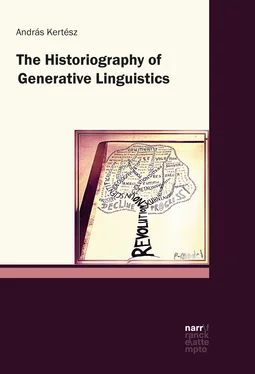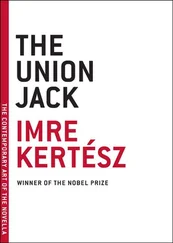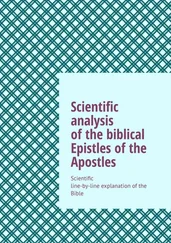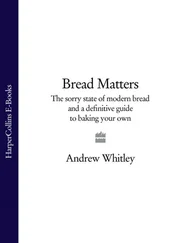Scientific research programresearchprograms are not finalized, maturemature theories, but keep changing and developing during a long maturing process (BoeckxBoeckx, Cedric 2006: 6, 91–93). It is this tenet that is at the heart of Boeckx’s approach and that motivates his line of argumentation (Boeckx 2006: 5). Namely, contrasting the term ›program‹ with ›theorytheory‹ highlights the circumstance that
[…] we are still far from having a fully-fledged minimalist theorytheory of languagelanguage. This fact has important repercussions for what it means to do research in the minimalist program . A program is open-ended, it may take a long time to maturemature, it allows researchers to make maximal use of their creativity as they try to move from minimalist guidelines to concrete principles, it makes room for multiple, not necessarily mutually consistentconsistent and compatible perspectives, and it cannot be evaluated in terms of true or false, but in terms of fecund or sterile (BoeckxBoeckx, Cedric 2006: 6; emphasis added).
This quotation expresses very well those aspects which a suitable methodological framework of minimalismminimalism is expected to capture. In BoeckxBoeckx, Cedric’s view the only such framework is LakatosLakatos, Imre’ term ›scientificscientific research programresearchprogram‹, which he therefore adopts (Boeckx 2006: 6–7, 87–91).
A scientificscientific research programresearchprogram in LakatosLakatos, Imre’ sense comprises a core that corresponds to the essence of the program in that it includes those components which are protected from refutation. The core is supplemented by auxiliary hypotheses which might change flexibly or which may yield alternatives that are different from each other yet all compatible with the core. Accordingly, the main task of characterizing minimalismminimalism is the identification of the core and the alternative auxiliary hypotheses. This is in harmony with the development and simultaneous existence of the various approaches within minimalism (BoeckxBoeckx, Cedric 2006: 88).
This type of scientificscientific research programresearchprogram cannot be falsified or verified, but is ›progressive‹ or ›degenerating‹. A program is degenerating if the theories that belong to it are restricted to the accommodation of familiar knowledge. BoeckxBoeckx, Cedric (2006: 89, footnote 22) characterizes the last period of the era of Government-BindingGovernment and Binding, Theory of Theory as being degenerated in this sense: »New facts were accommodated in an ad hoc fashion, often by revising definitions of central relations (like government ) on a case by case basis, with no great sense of unity«. Progressive programs make unexpected predictions, lead to radically new insights, shed fresh light on what has been assumed to be known, and raise new problems that pave the way to seeing things from new perspectives.
Scientific research programsresearchprogram are related to positive or negative heuristicsheuristic (BoeckxBoeckx, Cedric 2006: 6–7, 89–91).3 LakatosLakatos, Imre adopts the term ›heuristics‹ from PolyaPolya, George (1948) and (1954). In Lakatosian ›scientificscientific research programs‹, negative heuristics identify the ›core‹, that is, those components of the program which need to be protected against refuting evidence. Positive heuristics comprise problem solving strategies which serve the development, the refinement and the extension of the program.
Although BoeckxBoeckx, Cedric does not call the revolutionaryrevolutionary impact of ChomskyChomsky, Noam (1957) into question, in his opinion the key work that triggered the rise of generativism simultaneously with the abandonment of neo-Bloomfieldianneo-BloomfieldianBloomfieldian structuralismstructuralism was Chomsky’s (1959) famous review of SkinnerSkinner, B.F. (1957), because it initiated the development of biolinguistics (Boeckx 2006: 16). Clearly, if the starting point of generative linguistics is interpreted in this way, then its further intellectual historyhistory can be seen as a linear process leading to the current interplay between biologybiology and minimalismminimalism. This is the perspective from which Boeckx identifies the major driving forces of the development that culminated in the Minimalist ProgramMinimalist Program. The first of these is that a theorytheory of languagelanguage should aim at explanatory adequacy, which is reached if the theory accounts for the biologically given structure making it possible for children to select a descriptively adequate grammargrammar on the basis of primary linguistic datadata (Boeckx 2006: 18–19; Chomsky 1965: 25). Yet this aim brings with it – as the next driving force of the development of generative linguistics – the logicallogic problem of language acquisition. In order to explain the solution to this problem, Boeckx highlights the necessity of assuming the biological basis of language acquisition, regarded as the ›language organ‹ which constrains the range of possible grammars (Boeckx 2006: 27). Against the background of this hypothesis, the next issue is how the language organ can be accounted for in computational terms. As an answer, Boeckx provides a concise overview of Chomsky’s early argument against modeling grammar by finitefinite state machinefinite state machines and sketches the process that led – via phrase structurephrase structure grammars, transformationstransformation and conditions on transformations – to the Principles and Parameters approachPrinciples and Parameters, Theory of. This historical process provides, according to Boeckx, the two major pillars on which the Minimalist Program rests (Boeckx 2006: 60): first, the solution of the logical problem of language acquisition within the Principles and Parameters approach, presupposing the language organ in a biological sense, and second, the emphasis on the formalformal tools of the theory of language which conform to the GalileanGalilean style in science.
The core of the Minimalist ProgramMinimalist Program – in LakatosLakatos, Imre’ sense – includes a tripod which rests on the Principles and Parameters approachPrinciples and Parameters, Theory of: virtual conceptual necessityvirtual conceptual necessity, economyeconomy and symmetrysymmetry.
With respect to the auxiliary hypotheses that supplement the core, the basic insight is that
[a]s for auxiliary hypotheses, their existence simply indicates that there are various ways of articulating and defending a given research programresearchprogram. […] Programs allow researchers to try different combinations of the basic tenets, and to develop them with different emphases, vantage points, and ways of directing attention. The core will remain as a nucleus for observations and reflections, but beyond that there is great freedom and flexibility (BoeckxBoeckx, Cedric 2006: 94; emphasis added).
BoeckxBoeckx, Cedric discusses the significance of minimalismminimalism by elucidating two issues: how minimalism goes beyond explanatory adequacy and how it can resolve the tension between the search for general laws, simplicitysimplicity and perfectness on the one hand, and the seemingly very different methods applied in biologicalbiology inquiry on the other. It is the previously emphasized GalileanGalilean style in science that is at the heart of both issues. The deepest question of the natural sciencesciencenaturals is: why is nature the way it is? The Galilean answer says that nature is the way it is »[…] because that is the simplest way it could be« (Boeckx 2006: 115); in this sense, nature is ›perfect‹. Minimalism goes beyond explanatory adequacy insofar as it asks the question resulting from this Galilean worldview: to what degree is languagelanguage perfect? (Boeckx 2006: 116). Nevertheless, the problem emerges that while the Galilean style in science is rooted in physicsphysics, minimalism considers itself to be biology, and biology appears to be very different from physics. Biology has not been able to adopt the Galilean style because – primarily due to the diversity of the phenomena it investigates – its aim is not to reveal the kind of natural laws which are the subject matter of physics (Boeckx 2006: 131–138). Therefore, minimalism challenges biology. Boeckx (2006: 151) argues that this challenge can be met because »[…] the adherence to the Galilean style […] promises to yield important hypotheses not just in the strictly linguistic realm of grammaticalgrammatical analyses but also in the realm of biology at large«.
Читать дальше












